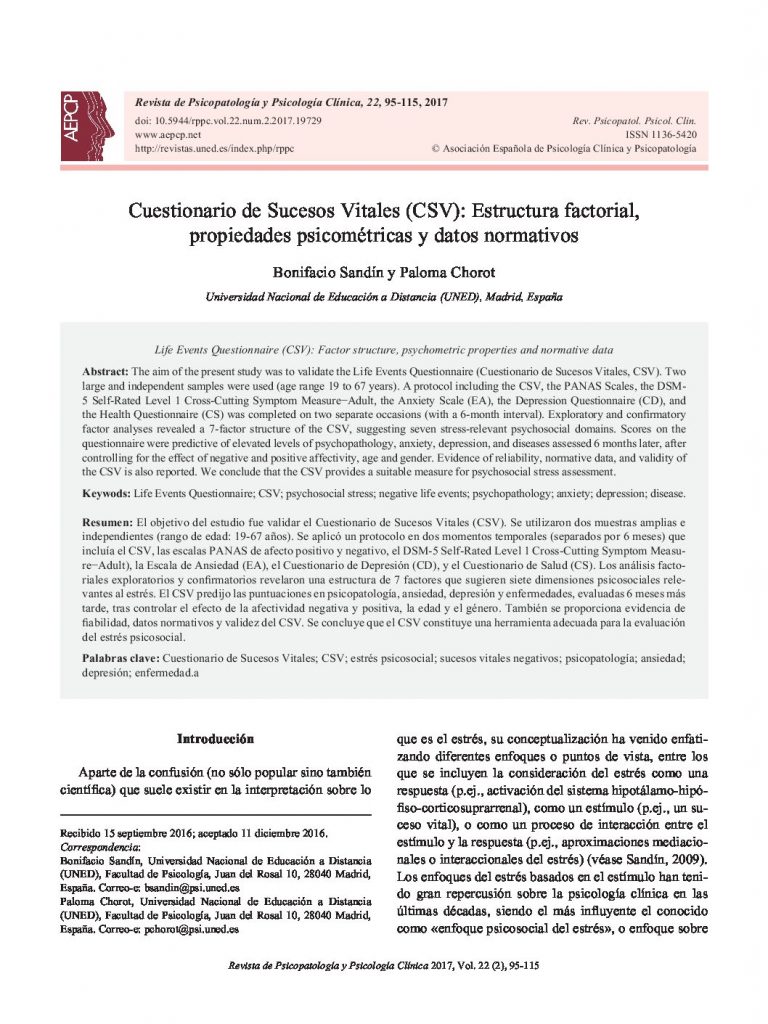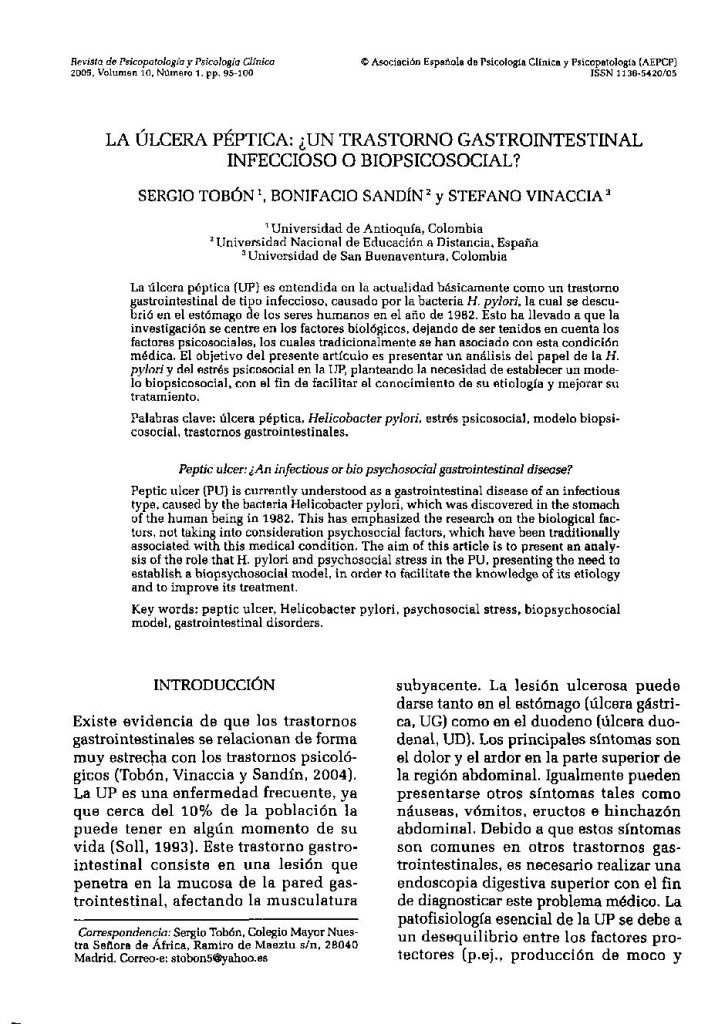Cuestionario de Sucesos Vitales (CSV): Estructura factorial, características psicométricas y datos normativos.

- PERE: Una nueva herramienta para valorar el reconocimiento de las emociones básicas y su aplicación en la esquizofrenia.
- Cuestionario de Sucesos Vitales (CSV): Estructura factorial, características psicométricas y datos normativos.
- Factores asociados a la ansiedad de los cuidadores de pacientes con enfermedad pulmonar obstructiva crónica (EPOC) durante su hospitalización.
- Entrenamiento en remediación cognitiva y habilidades emocionales en formato grupal para pacientes con obesidad. Un estudio piloto.
- Proceso de toma de decisiones en niños y adolescentes con TDAH: Revisión sistemática.
- Terapia cognitivo conductual integrativa.
The aim of the present study was to validate the Life Events Questionnaire (CSV). Two large and independent samples were used (age range 19 to 67 years). A protocol including the CSV, the PANAS Scales, the DSM-5 Self-Rated Level 1 Cross-Cutting Symptom MeasureAdult, the Anxiety Scale (EA), the Depression Questionnaire (CD), and the Health Questionnaire (CS) was completed on two separate occasions (with a 6-month interval). Exploratory and confirmatory factor analyses revealed a 7-factor structure of the CSV, suggesting seven stress-relevant psychosocial domains. Scores on the questionnaire were predictive of elevated levels of psychopathology, anxiety, depression, and diseases assessed 6 months later, after controlling for the effect of negative and positive affectivity, age and gender. Evidence of reliability, normative data, and validity of the CSV is also reported. We conclude that the CSV provides a suitable measure for psychosocial stress assessment.
El objetivo del estudio fue validar el Cuestionario de Sucesos Vitales (CSV). Se utilizaron dos muestras amplias e independientes (rango de edad: 19-67 años). Se aplicó un protocolo en dos momentos temporales (separados por 6 meses) que incluía el CSV, las escalas PANAS de afecto positivo y negativo, el DSM-5 Self-Rated Level 1 Cross-Cutting Symptom MeasureAdult), la Escala de Ansiedad (EA), el Cuestionario de Depresión (CD), y el Cuestionario de Salud (CS). Los análisis factoriales exploratorios y confirmatorios revelaron una estructura de 7 factores que sugieren siete dimensiones psicosociales relevantes al estrés. El CSV predijo las puntuaciones en psicopatología, ansiedad, depresión y enfermedades, evaluadas 6 meses más tarde, tras controlar el efecto de la afectividad negativa y positiva, la edad y el género. También se proporciona evidencia de fiabilidad, datos normativos y validez del CSV. Se concluye que el CSV constituye una herramienta adecuada para la evaluación del estrés psicosocial.




